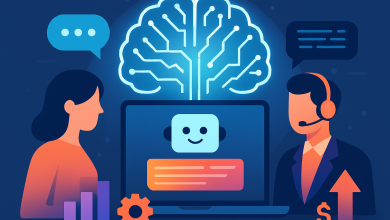
If you’ve spent any time in digital loyalty over the past few years, you’ve probably heard it: “We need more personalization.” Customers expect it, leadership demands it, and now with generative AI in the mix, it feels like every touchpoint can be customized in real time.
But personalization without trust? That’s a recipe for churn.
I’ve spent over two decades building loyalty programs and digital retail experiences for brands like Sobeys, Safeway, LCBO, and Petro-Canada. I’ve seen firsthand how customers engage when a loyalty experience feels personal… and how quickly they pull back when it crosses a line.
With generative AI, the possibilities are exciting. But the risk of getting it wrong is just as real.
Customers Want Personal, Not Creepy
It’s tempting to assume that more data equals more loyalty. But that’s not always the case.
At one brand I’ve spoken with, an experiment ran where AI-driven product suggestions were pushed in the loyalty app. The logic was sound: combine purchase history, real-time weather, location data… and surface timely, relevant offers.
The problem? Customers didn’t understand how or why the system was making these recommendations. A few loved it. Many found it invasive.
That’s the tension at the heart of GenAI in loyalty: the more tailored the experience, the more you need to explain the value exchange.
People will give you their data, but they want to know what you’re doing with it, and they want the option to opt out when it feels too much.
Generative AI Is a Trust Exercise
Trust in loyalty programs has already taken a hit in recent years, mostly due to point devaluation, poor transparency, and rising account fraud.
Adding generative AI to the mix doesn’t fix that. In fact, if you’re not careful, it can make things worse.
The moment a customer sees a hyper-personalized message they didn’t expect, or gets an offer that seems a little too targeted, they stop and wonder “What else do they know about me?”
And once that question surfaces, the loyalty shifts from emotional to transactional. Or disappears altogether.
The antidote? Clarity, restraint, and control.
Designing AI-Driven Loyalty That Feels Human
Here’s what I’ve learned about making GenAI work in loyalty, without breaching trust:
- Explain the Why, Not Just the What
Don’t just serve personalized offers, explain how they were selected. A simple line like “We thought this might interest you based on your last few purchases” helps humanize the interaction. - Use Personalization to Empower, Not Pressure
GenAI should guide and support, not manipulate. Steer clear of dark patterns that create urgency or guilt. Instead, use AI to highlight helpful benefits, suggest savings, or recommend member-exclusive perks. - Offer a Control Panel
Let customers set preferences for personalization. Do they want offers based on location? Purchase history? App behavior? Giving them this control builds confidence and turns personalization into partnership. - Blend Predictive and Human-Centered Design
Use GenAI to identify what might matter, but let product and design teams shape how that’s delivered. Raw predictions can be useful, but thoughtful UX is what builds loyalty. - Avoid the “Always On” Trap
One of the biggest mistakes I see is over-triggering GenAI recommendations. Just because you can personalize every message doesn’t mean you should. Sometimes, silence builds more trust than relevance.
When AI Builds Loyalty, And When It Breaks It
We talk a lot about customer experience, but the truth is not all experiences are good experiences.
A loyalty program that knows your purchase history and uses it to save you time – that’s great. One that knows your habits better than you do and pushes you to buy when you’re trying to cut back – that feels exploitative.
One team tested a generative content model for in-app messaging. It delivered personalized messages in seconds – and while conversions initially rose, so did complaints. The tone felt off. Customers said it sounded like a bot trying too hard.
The takeaway? Tone matters as much as targeting. And trust can’t be scaled blindly.
Final Thought
Generative AI can be a powerful tool for driving loyalty, but only if it’s grounded in transparency, respect, and smart design.
It’s not about tricking people into clicking. It’s about helping them feel seen, understood, and in control of their relationship with your brand.
In the end, the best loyalty programs don’t just know what their customers want. They know when to step in… and when to step back.
And that’s something even the best AI still needs help figuring out.
Author:
Wesley Almeida is a product leader with over 20 years of experience in digital retail, focused on loyalty programs, fraud prevention, and customer experience. He’s worked with major Canadian retailers like LCBO, Petro-Canada, and Sobeys, helping them modernize digital platforms and deliver more secure, customer-centric experiences. Wesley is also an active member of the American Marketing Association, PDMA, and Product School’s alumni network, and contributes regularly to industry publications.






